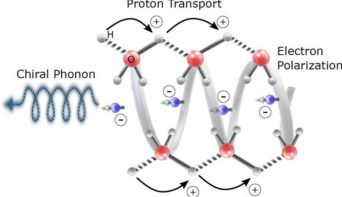
They say love teaches even asses to dance; well it seems the proverb holds true even for some microscopic organisms. Colonies of the common algae Volvox have been observed locked together in “waltz” and “minuet” in an attempt to boost chances of fertilization. That is according to a team of physicists from Tohoku University and the University of Cambridge.
These findings provide valuable new information to both biological fluid dynamics and the evolution of Volvox algae, say the researchers. It could also further our understanding of the mechanics inside the human body. “The flagella with which Volvox swims are essentially identical to the cilia that operate within the reproductive and respiratory systems,” said Raymond Goldstein, one of the researchers at Cambridge.
Pond celebratory
In the history of science Volvox hold an important place, being closely linked with the birth of microbiology in the late 17th century. The alga was discovered by Antony van Leeuwenhoek using a very early microscope, and constituted a surprising first in taxonomy — spinning via a fixed body axis.
This new research now describes the discovery of two different types of algal movement, and gives quantitative evidence that the “dances” are a result solely of hydrodynamics. All other mechanisms including chemical signalling, behavioural responses, and the nervous system, are ruled out by the physicists.
Goldstein and his team noted that at certain points in the Volvox life cycle, two algae lock together and rotate in stable bound states. Short-range lubrication combines with hydrodynamic forces causing paired algae to rotate. Near the water surface, lighter couples rotate about each other as in waltz, whilst lower down in the water column heavier pairings spin laterally out-of-phase as in minuet.
Critical audience
The physicists studied the 48 hour Volvox life cycle and linked these unusual movements with the reproductive phase. “The [hydrodynamic] flows will tend to speed up the process by which a sperm packet can find a female Volvox,” Goldstein told physicsworld.com.
Cristian Solari, an experimental biologist at the University of Buenos Aires believes these findings are also significant for evolutionary biologists. “In this scenario, physical forces seem to have moulded the evolutionary transition to higher biological complexity,” he said.
Goldstein told physicsworld.com that these findings add to a body of knowledge concerning a model organism in zoology. He also hopes it can have some secondary significance to our picture of human biomechanics. “The waltzing and all of that would not have a parallel within us, but the coordinated beating of those flagella is common to all situations,” said Goldstein.
This research was published in Phys. Rev. Lett.



